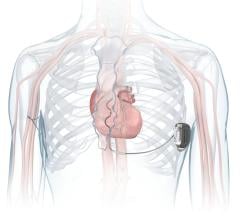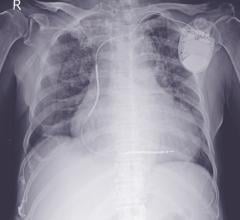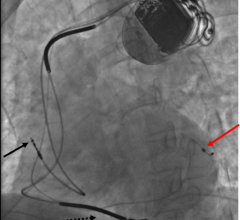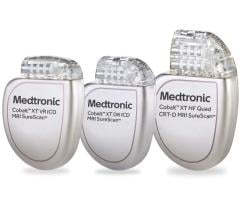
December 11, 2014 — A new study evaluating Optim-insulated implantable cardioverter defibrillator (ICD) leads found low rates of all-cause mechanical failure during a median follow-up of 3.2 years. The long-term prospective study is the first-of-its-kind to observe a large population of patients over a relatively long follow-up period. The study assessed Durata DF4, Durata DF1 and Riata ST Optim leads to determine the rates of all-cause mechanical failure and its subtypes, including conductor fracture, insulation abrasion and externalized conductors.
The study independently analyzed data from three prospective registries launched by St. Jude Medical between 2006 and 2009. The registries enrolled 10,835 patients (mean age of 66 years and a mean left ventricular ejection fraction of 29 percent) with 11,016 Optim-insulated leads implanted (8,147 Durata and 2,869 Riata ST Optim leads). All registries included standardized baseline documentation, six-month follow-up, adverse events reports and documentation of lead revisions or inactivation, study withdrawal and death.
During a median follow-up of 3.2 years, there were 51 mechanical failures (0.46 percent), with 99 percent of patients free of this outcome by five years of follow-up. In addition, freedom from conductor fracture was identified in 99.4 percent of patients and all-cause abrasion in 99.8 percent of the leads, and there were no reports of externalized conductors.
The positive results come at a time when ICDs are implanted at a high rate of approximately 10,000 implants per month in the United States. Additionally, the mechanical failures in older Riata leads led to class action lawsuits and U.S. Food and Drug Administration recalls left many people skeptical of their ability to be effective. The new Optim-insulated leads were designed to have greater durability and lower rates of abrasion than older designs.
Failure of high-voltage leads have major implications for patient morbidity and mortality and can be very costly for the U.S. health care system. This study is ongoing and will report on long-term follow-up of these patients and leads in the future. The study also highlights the need for prospective observational studies to be initiated at the time of introduction of a new lead to provide reliable data regarding lead survival.
For more information: www.HRSonline.org


 September 05, 2024
September 05, 2024 








